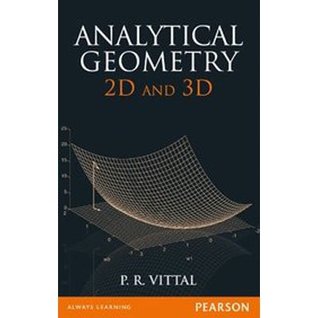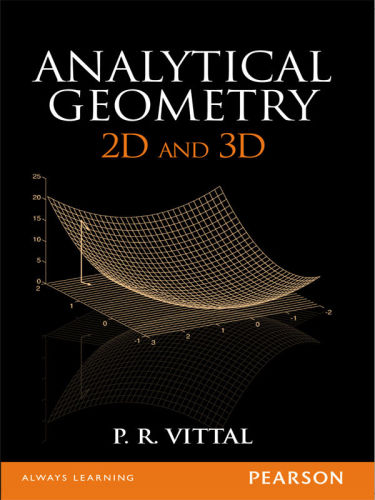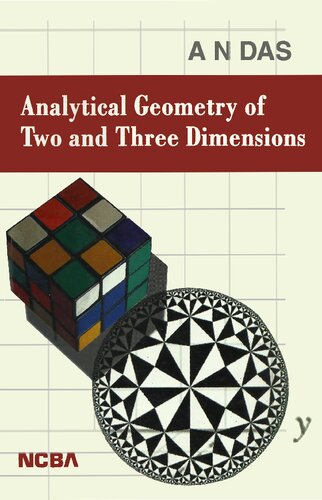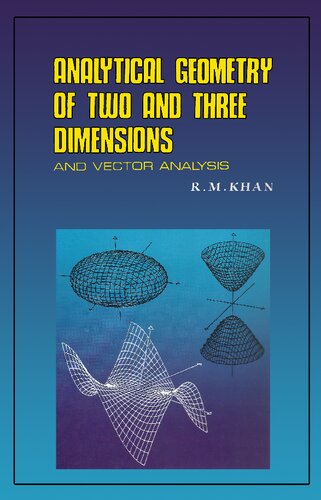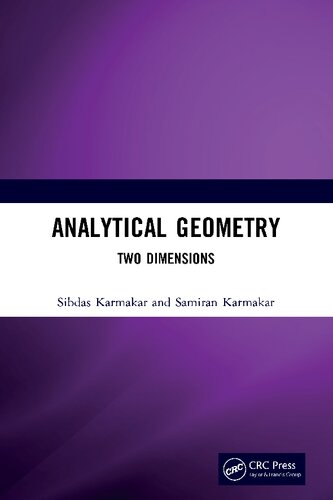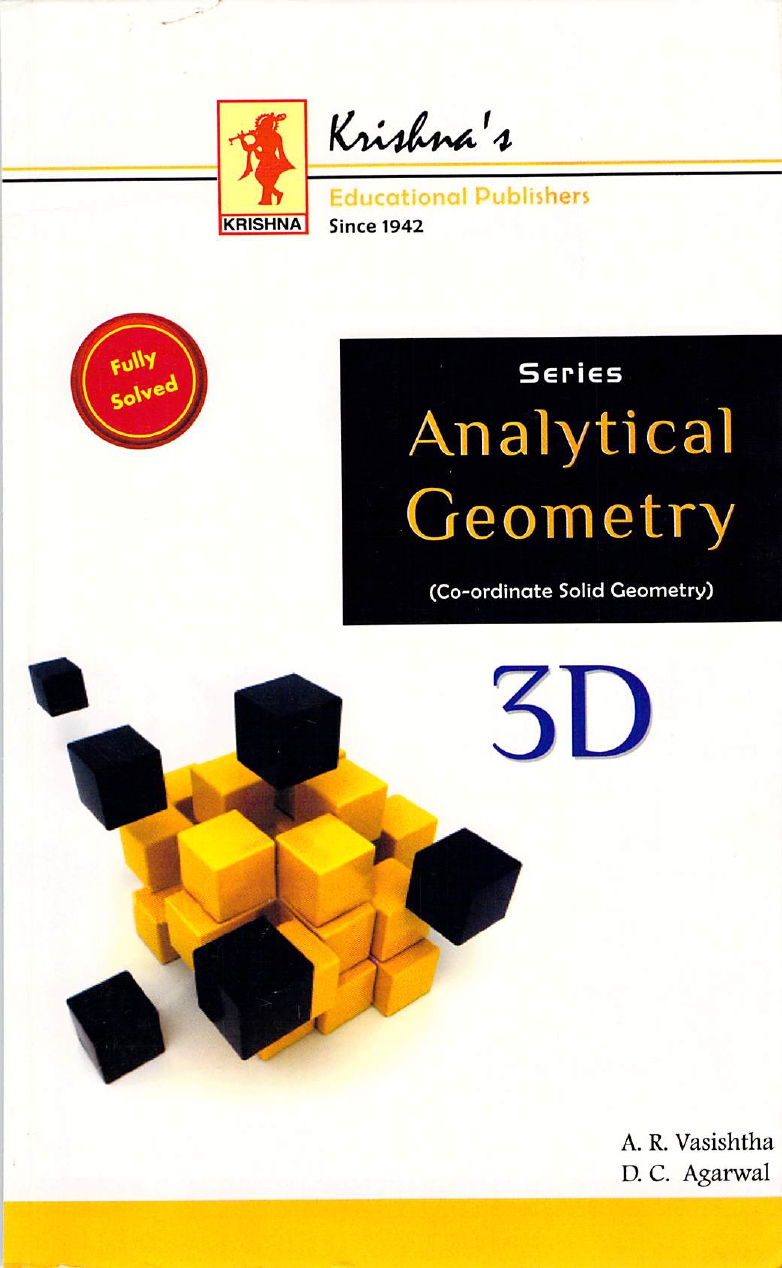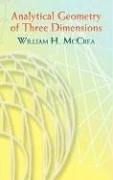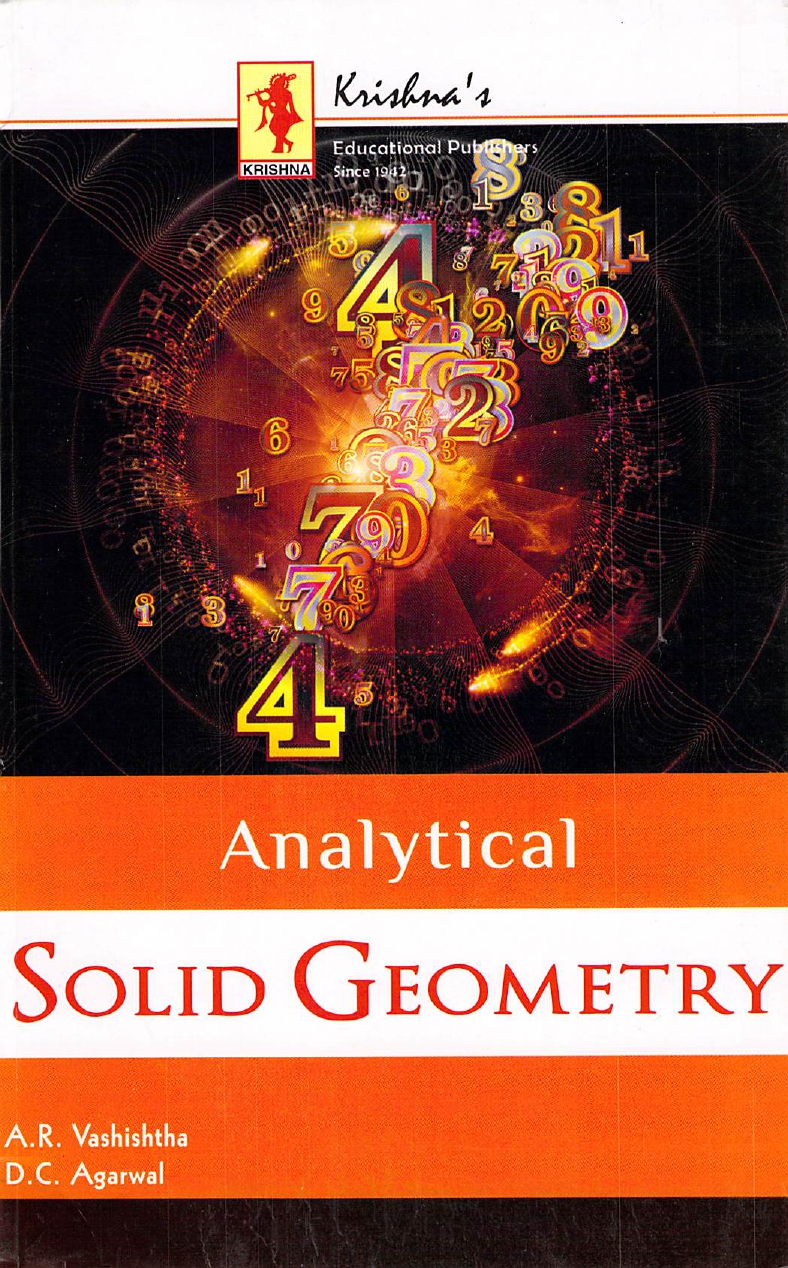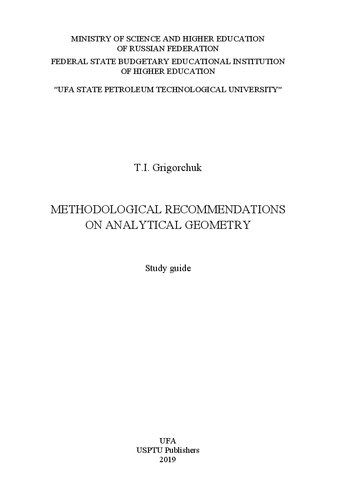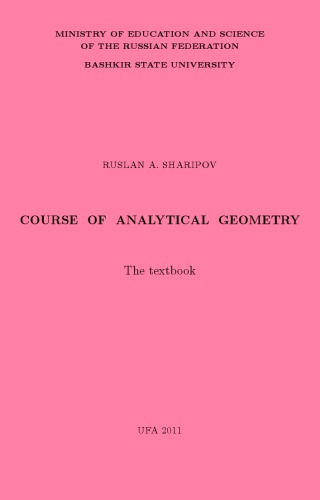1.1 Introduction
1.1.1 Distance between Two Given Points
1.2.1 Coordinates of the Point that Divides the Line Joining Two Given Points in a Given Ratio
1.2.3 Centroid of a Triangle Given its Vertices
1.2.4 Area of Triangle ABC with Vertices A(x1, y1), B(x2, y2) and C(x3, y3)
1.2.5 Area of the Quadrilateral Given its Vertices
Illustrative Examples
Exercises
2.1.1 Determination of the General Equation of a Straight Line
2.1.2 Equation of a Straight Line Parallel to y-axis and at a Distance of h units from x-axis
2.3 Slope-intercept Form of a Straight Line
2.4 Intercept Form
2.7 Normal Form
2.8 Parametric Form and Distance Form
2.9 Perpendicular Distance on a Straight Line
2.10 Intersection of Two Straight Lines
2.11 Concurrent Straight Lines
2.12 Angle between Two Straight Lines
Illustrative Examples
Exercises
3.1 Introduction
3.3 Angle between the Lines Represented by ax² + 2hxy + by² = 0
3.4 Equation for the Bisector of the Angles between the Lines Given by ax² + 2hxy + by² = 0
3.5 Condition for General Equation of a Second Degree Equation to Represent a Pair of Straight Lines
Illustrative Examples
Exercises
4.3 Centre and Radius of a Circle Represented by the Equation x² + y² + 2gx + 2fy + c = 0
4.4 Length of Tangent from Point P(x1, y1) to the Circle x² + y² + 2gx + 2fy + c = 0
4.6 Equation of Circle with the Line Joining Points A(x1, y1) and B(x2, y2) as the ends of Diameter
4.7 Condition for the Straight Line y = mx + c to be a Tangent to the Circle x² + y² = a²
4.8 Equation of the Chord of Contact of Tangents from (x1, y1) to the Circle x² + y² + 2gx + 2fy + c = 0
4.9 Two Tangents can Always be Drawn from a Given Point to a Circle and the Locus of the Point of Intersection of Perpendicular Tangents is a Circle
4.10.1 Polar of the Point P(x1, y1) with Respect to the Circle x² + y² + 2gx + 2fy + c = 0
4.11.1 Condition for the Lines lx + my + n = 0 and l1x + m1y + n1 = 0 to be Conjugate Lines with Respect to the Circle x² + y² = a²
4.12 Equation of a Chord of Circle x² + y² + 2gx + 2fy + c = 0 in Terms of its Middle Point
4.13 Combined Equation of a Pair of Tangents from (x1, y1) to the Circle x² + y² + 2gx + 2fy + c = 0
Illustrative Examples
Exercises
5.1 Radical Axis of Two Circles
5.2 Orthogonal Circles
5.3 Coaxal System
5.4 Limiting Points
5.5 Examples (Radical Axis)
5.6 Examples (Limiting Points)
Exercises
6.2 General Equation of a Conic
6.3 Equation of a Parabola
6.5 Different Forms of Parabola
Illustrative Examples Based on Focus Directrix Property
6.6 Condition for Tangency
6.8 Perpendicular Tangents
6.9 Equation of Tangent
6.10 Equation of Normal
6.11 Equation of Chord of Contact
6.13 Conjugate Lines
6.14 Pair of Tangents
6.15 Chord Interms of Mid-point
6.17 Chord Joining Two Points
6.19 Point of Intersection of Tangents
6.21 Number of Normals from a Point
6.22 Intersection of a Parabola and a Circle
Illustrative Examples Based on Tangents and Normals
Illustrative Examples Based on Parameters
Exercises
7.2 Standard Equation of an Ellipse
7.4 Position of a Point
7.5 Auxiliary Circle
Illustrative Examples Based on Focus-directrix Property
7.6 Condition for Tangency
7.7 Director Circle of an Ellipse
7.8 Equation of the Tangent
7.9 Equation of Tangent and Normal
7.10 Equation to the Chord of Contact
7.11 Equation of the Polar
7.12 Condition for Conjugate Lines
Illustrative Examples Based on Tangents, Normals, Pole-polar and Chord
7.14 Equation of the Chord Joining the Points
7.15 Equation of Tangent at ‘p’ on the Ellipse
7.16 Conormal Points
7.17 Concyclic Points
7.18 Equation of a Chord in Terms of its Middle Point
7.19 Combined Equation of Pair of Tangents
7.20 Conjugate Diameters
7.20.1 Locus of Midpoint
7.20.2 Property: The Eccentric Angles of the Extremities of a Pair of Semi-conjugate Diameter Differ by a Right Angle
7.20.4 Property: The Tangents at the Extremities of a Pair of Conjugate Diameters of an Ellipse Encloses a Parallelogram Whose Area Is Constant
7.20.5 Property: The Product of the Focal Distances of a Point on an Ellipse Is Equal to the Square of the Semi-diameter Which Is Conjugate to the Diameter Through the Point
7.21.1 Property: Equi-conjugate Diameters of an Ellipse Lie along the Diagonals of the Rectangle Formed by the Tangent at the Ends of its Axes
Illustrative Examples Based on Conjugate Diameters
Exercises
8.2 Standard Equation
8.5 Rectangular Hyperbola
8.6 Conjugate Hyperbola
8.7.1 Equations of Asymptotes of the Hyperbola
8.7.2 Angle between the Asymptotes
8.8 Conjugate Diameters
8.9.1 Equation of Rectangular Hyperbola with Reference to Asymptotes as Axes
8.9.2 Equations of Tangent and Normal at (x1, y1) on the Rectangular Hyperbola xy = c²
8.9.3 Equation of Tangent and Normal at ... on the Rectangular Hyperbola xy = c²
8.9.6 Results Concerning the Rectangular Hyperbola
8.9.8 Concyclic Points on the Rectangular Hyperbola
Exercises
9.2 Definition of Polar Coordinates
9.3 Relation between Cartesian Coordinates and Polar Coordinates
9.5 Polar Equation of a Straight Line in Normal Form
9.6.1 Polar Equation of a Circle
9.6.2 Equation of the Chord of the Circle r = 2a cos p on the Line Joining the Points (r1, p1) and (r2, p2)
9.6.3 Equation of the Normal at ... on the Circle r = 2a cos p
9.6.4 Equation of the Circle on the Line Joining the Points (a, `) and (b, a) as the ends of a Diameter
9.7.1 Polar Equation of a Conic
9.7.2 Equation to the Directrix Corresponding to the Pole
9.7.3 Equation to the Directrix Corresponding to Focus Other than the Pole
9.7.4 Equation of Chord Joining the Points whose Vectorial Angles are ... on the Conic
9.7.5 Tangent at the Point whose Vectorial Angle is ... on the Conic
9.7.6 Equation of Normal at the Point whose Vectorial Angle is ... on the Conic
9.7.7 Asymptotes of the Conic
9.7.8 Equation of Chord of Contact of Tangents from (r1, p1) to the Conic
9.7.9 Equation of the Polar of any Point (r1, p1) with Respect to the Conic
Exercises
10.2 Shift of Origin without Changing the Direction of Axes
10.3 Rotation of Axes without Changing the Origin
10.5 Invariants
10.6 Conditions for the General Equation of the Second Degree to Represent a Conic
10.8 Equation of the Conic Referred to the Centre as Origin
10.9 Length and Position of the Axes of the Central Conic whose Equation is ax² + 2hxy + by² = 1
10.10 Axis and Vertex of the Parabola whose Equation is ax² + 2hxy + by² + 2gx + 2fy + c = 0
Exercises
11.1 Rectangular Coordinate Axes
11.2 Formula for Distance between Two Points
11.2.1 Section Formula
11.3 Centroid of Triangle
11.5 Direction Cosines
11.5.1 Direction Ratios
11.5.2 Projection of a Line
11.5.4 Angle between Two Given Lines
Illustrative Examples
Exercises
12.2 General Equation of a Plane
12.4 Equation of a Plane in Intercept Form
12.5 Equation of a Plane in Normal Form
12.7 Perpendicular Distance From a Point on a Plane
12.8 Plane Passing Through Three Given Points
12.9 To Find the Ratio in which the Plane Joining the Points (x1, y1, z1) and (x2, y2, z2) is Divided by the Plane ax + by + cz + d = 0
12.10 Plane Passing Through the Intersection of Two Given Planes
12.11 Equation of the Planes which Bisect the Angle between Two Given Planes
12.12 Condition for the Homogenous Equation of the Second Degree to Represent a Pair of Planes
Illustrative Examples
Exercises
13.2 Equation of a Straight Line in Symmetrical Form
13.3 Equations of a Straight Line Passing Through the Two Given Points
13.4 Equations of a Straight Line Determined by a Pair of Planes in Symmetrical Form
13.5 Angle between a Plane and a Line
13.7 Conditions for a Line to Lie on a Plane
13.9 Coplanar Lines
13.10.1 Length and Equations of the Line of the Shortest Distance
13.10.2 Equation of the Line of SD
13.11 Equations of Two Non-intersecting Lines
13.12 Intersection of Three Planes
13.13 Conditions for Three Given Planes to Form a Triangular Prism
Illustrative Examples
Illustrative Examples (Coplanar Lines and Shortest Distance)
Exercises
14.2 The Equation of a Sphere with Centre at (a, b, c) and Radius r
14.3 Equation of the Sphere on the Line Joining the Points (x1, y1, z1) and (x2, y2, z2) as Diameter
14.5 Equation of the Tangent Plane at (x1, y1, z1) to the Sphere x² + y² + z² + 2ux + 2vy + 2wz + d = 0
14.6 Section of a Sphere by a Plane
14.8 Intersection of Two Spheres
14.10 Condition for Orthogonality of Two Spheres
14.11.1 Obtain the Equations to the Radical Plane of Two Given Spheres
14.11.2 Properties of Radical Plane
14.12.1 General Equation to a System of Coaxal Spheres
14.12.3 Lim

